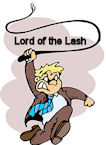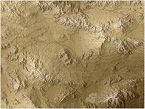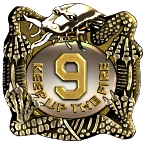WildCatNL
Posts: 513
Joined: 3/27/2009
From: Eindhoven, the Netherlands
Status: offline

|
quote:
ORIGINAL: mb4329
Does it make sense to pick up hexdraw or is 2.1 going to go to something else?
For 2.1 Southern Storm, our aim is to stick to 'Hexdraw compatible' maps as input for the Map Values editor. This in order to enable anybody on the team (and outside the team) to create a map.
Once the Map Values editor has created the .fp9 file, any map graphics of the same dimensions can be shown in the game (the same HexDraw map, or satellite images from Google maps, photo copies of paper maps, etc). I do create a second map to show in-game, and spend a good amount of time on it.
Note that for Southern Storm, the terrain types and colors understood by the Map Values editor are being extended to support a larger variety in terrain, and become even more mod-friendly. More on that down the road.
Although HexDraw works for 2.09 and will work for 2.1, I have switched from HexDraw to QGis for creating the 2.1 input for the Map Values editor. I wasn't too happy with HexDraw's performance and limitations for large maps, and I hated the hassle going from HexDraw output via downsizing and clipping to Map Values editor input. Although, in hindsight, I could have automated that using ImageMagick, as Harry has described. Or created HexDraw templates that are on the same scale as expected by the Map Values editor.
QGis is a free software tool for editing and rendering maps based on digital elevation data, OpenStreetMap input, and your own annotations. It can be configured to output maps at the dimensions expected by the Map Values editor (128 px / km, with 128 dots per inch, so 1km:inch = 1:39370) and styled to render elevation, forests, etc. in the colors expected by the Map Values editor. Using the MMQGIS plug-in, you can even have a hex-grid overlay with exactly the right dimensions.
The main downside of QGis is the complexity of the tool (way too many options) and the need to learn about OpenStreetMap data in order to filter the right elements to display on the map. And OpenStreetMap data is often incomplete, doesn't nicely line up with hex grids, and doesn't always reflect 1989.
So, yes, HexDraw will continue to work (although we might have to provide new templates for 2.1). And there are alternatives.
William
_____________________________
William
On Target Simulations LLC
|
 Printable Version
Printable Version












 New Messages
New Messages No New Messages
No New Messages Hot Topic w/ New Messages
Hot Topic w/ New Messages Hot Topic w/o New Messages
Hot Topic w/o New Messages Locked w/ New Messages
Locked w/ New Messages Locked w/o New Messages
Locked w/o New Messages Post New Thread
Post New Thread